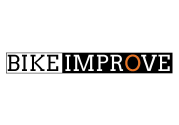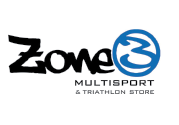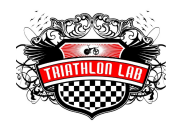Angeles Crest Ride FAQ
The preferred way to learn the answers to each of these questions is to come out and ride with us a few times.
1. What is the Angeles Crest Highway?
The Angeles Crest Highway is a road that connects the southern
face of the 10,064-foot San Gabriel Range and the Angeles National
Forest with the High Deserts to the North and East. It is a road
designed not for a fast commute but for a scenic drive. It rises from
approximately 1000 ft above sea level to 5000 feet in 15 short miles,
then takes on some rollers before ascending again to over 7000 feet at
mile 35 at Cloudburst summit. There are two more major dips and then
peaks including Dawson’s summit at 8000 feet before this eastbound road
dumps you out near the ski town of Wrightwood. This is all within an
hour or so of Los Angeles proper, and I defy anyone to name another
city in the lower 48 boasting such a truly local alpine climb from sea
level to tree level (unless you count Big Bear in San Berdu or
Idyllwild near Palm Springs, both Southern California attractions).
Even 14,000-foot Mt. Rainier is a bit of drive from Seattle.
Albuquerque and Denver start out above a mile above sea level, so don‘t
even compare those. Come on, Angelinos! Represent!
2. What is the Angeles Crest Ride?
The Angeles Crest ride is a LA TRI club long weekend ride based
out of Pasadena and the San Gabriel Valley. Most of us live in the
Glendale or Pasadena area or close to downtown LA. The ride is
currently on Sundays but has gone on both Sundays and Saturdays in the
Past. We ride on the Angeles Crest Highway whenever possible, but also
on the San Gabriel River Trail to acquire flat mileage and Glendora
Mountain Road for a nice change of pace and lower elevation climbing.
We also ride from Malibu to Ventura when weather does not permit riding
in the San Gabriel Mountains, or when we need a change of pace. The
ride regulars know the area well and consistently ride every week on
one or more of the routes listed.
3. How do I get to the Angeles Crest Ride?
We have two starting points for the ride. The first is near the base of Angeles Crest Highway, at Starbuck’s La Canada, corner of Foothill and Gould. From Los Angeles take the Glendale 2 Fwy North; go east (right) on the 210 freeway. Exit at Gould (the first exit past Angeles Crest). Turn right and it’s immediately there on your left. Park on the street or in the mini-mall parking lot. From the East exit at Foothill Blvd in La Canada. Turn left, pass under the Fwy, and turn right into the mini-mall at the intersection of Gould. Starbuck’s is there on your right.
The second starting point is Starbuck’s in San Marino. Take
the 210 fwy west from the East San Gabriel Valley and East from the 134
fwy at the Rose Bowl. Exit at Sierra Madre Blvd. Take this road south
for two miles to Huntington Drive in San Marino. On the left hand,
northeast corner, there is a Starbucks. Park on the street.
4. How dangerous/safe is the ride?
Riding a bicycle is an inherently dangerous activity. So is driving a car and getting out of a soapy bathtub. Given the frequency and length of time with which we have ridden there, and the fact that we have never had a rider go down, I do not believe that the Angeles Crest is a more dangerous place to ride a bicycle than other places on or off the highway.
It is an alpine ride. But, no, it is not “crazy†to ride there. You need to be cautious on corners and descents. You need to wear your helmet and keep your head up at all times, even while climbing. Do not join this fad of doffing your helmet for a climb. There are recreational motorcyclists up there, especially in the summer months. Look out for them, as they tend to treat the road as a racetrack. You need to firmly ride on the right in a straight line. However, there are long stretches of time, sometimes even hours, when you do not see a car. Wear bright colors and keep your tail light on at all times, even during broad daylight and even when others tell you to turn it off. The roads are mostly in good condition, especially on the lower level climbs, and are swept frequently.
If you ride safe up there, then it is a safe ride. That does
not mean that you will not have an accident, but it certainly lessens
the chances. Of course, you assume one hundred percent of the risk for
any all injury to you or others, and we/I expressly disclaim any and
all responsibility. This is not a “ride“ in that sense. We‘re leaving
at the same time, we’ll probably ride together if we can, but you are
on your own.
5. Describe the rides?
a. Angeles Crest Hwy to Red Box and Mount Wilson: Ascend from
Starbuck’s La Canada up Angeles Crest Highway fifteen miles to Red Box
Junction (4500 feet). Descend or climb another five miles to Mount
Wilson. Return. A beginner version of this ride turns around at Clear
Creek, the first junction/station at mile 10. Thirty miles to Red Box
/return; forty to Wilson/return.
All levels.
b. Angeles Crest Hwy to Newcomb’s Ranch/Cloudburst Summit:
Ascend past Red Box, descend for a mile or two and do some “uphill
rollers†to Newcomb’s ranch (4500 feet, at mile 15) Stop briefly at
Newcomb’s (a biker roadhouse at mile 27) and do a 7 mile “Alp-de Huezâ€
7-8 percent climb up to 7000 feet at Cloudburst Summit (mile 35).
Fifty-five to Newcomb’s/return and Seventy to Cloudburst/return (But
those miles take longer than other 70 mile rides). Intermediate to
advanced, with beginner options for early turn around.
c. Upper Big Tujunga Loop/Mill Creek: This is a favorite that
can be done even with snow down to 4500 feet. Angeles Crest Highway to
Angeles Forest Highway left (go eight miles). Stop at Fire station for
refuel/break. Turn right on Upper Big Tujunga, go nine miles back to
Angeles Crest, turn right and return to La Canada on AC Highway.
Options for making this longer include passing that right turn on UBT,
climbing 6 miles to Mill Creek Summit, returning and then going left on
UBT. If you have time, you can also do this as a precursor to a ride to
Cloudburst summit, making the ride very close to a century. 45 mile
loop. Fifty-seven with Mill Creek out and back. Very hilly,
intermediate to advanced.
d. Glendora Mountain Road: Leave Starbuck’s San Marino. Take
Huntington Drive Left (east) to Encanto Parkway (north), right after
1/2 mile on footbridge, left on bike path. Right on the Highway at the
end of the path. Left on Sierra Madre Blvd (1 mile), and left on
Glendora Mountain Road (about 6 miles). Ten miles to Stone Wall Summit
and turn around. Watch out for bikes descending fast as you climb up.
The road is under construction , closed to vehicular traffic, and bikes
are allowed only on Sundays according to a posted Caltrans neon sign.
Fifty-six miles. Good hilly ride for all levels with a little
climbing/descending experience.
e. San Gabriel River Trail. Leave Starbuck’s San Marino. Take
Huntington Drive Left (east) to Encanto Parkway (north), right after
1/2 mile on footbridge, right on Bike Path to Seal Beach and Return.
Yell “incoming†as you enter tunnel and “outgoing†as you exit tunnels.
Ninety-two miles with more elevation than you’d think. Flat, all
levels.
6. What time do the rides leave?
Clip-in is at 6:15 in La Canada and 6:30 in San Marino unless
otherwise specified in weekly club emails. Clip-in means clip-in and
riding off and we’re not kidding. Call us if you’re late and we’ll try
to meet you down the road.
7. Why do you leave so early in the morning?
To beat the traffic; triathlons start early; tradition.
8. How experienced do I have to be to ride with the Angeles Crest Ride?
All levels are welcome, but it should not be your first ride.
You need a month or two of bike handling, descending and climbing
before going on the short ride to Clear Creek (Angeles Crest Hwy) or
Glendora Mountain Road. You certainly will not find any ride too easy,
even if you have a lot of experience.
9. How fast do you ride?
Generally slower during the winter, but 17-21 mph on long
varied terrain and 8-11 on climbs. Must faster on descents, of course.
All levels welcome.
10. How long is the ride?
The idea is that it will be that week’s “long rideâ€. So,
generally, three to six hours. If your training program calls for a
shorter or longer ride than planned, all routes will accommodate such a
ride.
11. How much elevation gain is on the rides?
There is considerable elevation gain on all rides, even the
“flat rides†to the beach and back. The ride to Cloudburst summit has
8000 feet of gain.
12. What should I wear on the mountain rides?
Winter rides are cold but very fun. If in the 30’s or 40’s:
Bring long bike pants; under shirt/vest; bike jersey; over shirt/vest;
warm, fuzzy arm warmers; wind jacket; long-fingered gloves,
bandanna/head warmer. This will do for most of the year. In the summer,
you can wear just bike shorts and jersey with short-fingered gloves,
but I always carry arm warmers and a wind jacket. It’s the wilderness.
13. What gear should I bring for the ride?
You must have: three energy bars (or equivalent amount of
food), energy drink powder for two refills plus a bottle of mixed
energy drink, electrolytes/salt, money, identification (preferably Road
ID and a driver‘s license) no fewer than two tubes (which you have
double checked) and two cartridges for a C02 pump, two tire levers, a
patch kit, and an Allen tool. Check the batteries in your taillight and
keep it on during the ride. If another rider reaches over and switches
it off for you, smile and switch it back on. If we leave in darkness
(November through-February), a headlight is also required.
A camelback is recommended for longer rides, especially on days
above 75 degrees. A cell phone is recommended but will not work on
Angeles Crest Highway. It may work on GMR and SG River Trail. I turn
mine off during the ride to save battery power.
14. What sort of wheels should I bring?
Training wheels or climbing wheels are optimal. For example,
Mavic Open Pro’s or Ksyrium’s or Easton/Velomax Circuits are perfect.
23-mm tires are preferred. Leave your race wheels for your race, unless
they’re all you have. It can get windy in those mountains, so I do not
recommend a deep dish or disc (go for it on a beach ride, though).
15. What gearing should I use for the ride?
Use a 12-25 or 12-27 cassette if you have one. You will not be
chided for bringing a triple, but all rides are quite doable with a
double. Some of us have even made it to the top with a “corn cobâ€
cassette (11-23).
16. If I have a tri-specific configuration bike, can I ride that in the hills?
Yes. A road configuration is ideal, but a tri bike is ok if you
have good descending skills on that bike (i.e., stay out of the
aerobars on descents). You will generate more power on the climbs with
a more relaxed seat position, and tri-bikes can be skittish on windy
descents. Nothing climbs and descends like a road bike.
17. What percent incline are the climbs?
Most climbs are sustained climbs of 6-8 percent.
18. What is the weather like on Angeles Crest?
Usually, a few degrees cooler than down below. Temp’s can be accurately checked by using “Accuweather.com,†“Weather.com†or any similar web service and plugging-in the forecast and current temperature for Mount Wilson, California.
There are general predictions, based on time of year. In the summer, it’s usually just like Los Angeles or a few degrees cooler. (60-90 degrees). In the Spring or Fall, it’s usually cool with up’s and down’s so dress to quickly strip and bundle. In the Winter, It’s can be so cold or snowy that riding elsewhere is more reasonable, especially if the snow line is below 4000 feet. Be on guard for black ice and ice patches in Winter, Spring and fall. In the fall, if a high-pressure system sets up inland, beware of Santa Ana winds that can make it very dangerous to ride into the canyons due to the fire risk. Despite these occasional weather obstacles, one can safely ride a bicycle on Angeles Crest Highway nearly every week of every year and some of our best rides have been in winter.
19. What is Glendora Mountain Road?
A 20-mile mountain road that connects the suburb of Glendora with Mount Baldy Village ski resort. As of this writing it is closed to cars due to repairs and previous fires but open to bikes and other recreational vehicles on Sundays. That means it is really a bike-only road. It is a nice, meandering, 6-8 percent grade, 10-mile climb to a summit with a twisty descent. If one takes the road the full 20 miles, one is literally dropped into the Baldy Village after 10 miles of “sucker slides†(you think you’re descending but you’re only getting ready to climb again). It is a gorgeous road and a Southern California cycling must.
20. What is the San Gabriel River Trail?
A 35-mile bike path with only one road crossing that traverses the Valley. It starts out at the mouth of the East Fork of the Angeles National Forest, right up against the San Gabriel's in the city of Duarte. It meanders to the Santa Fe Dam, crosses a road and then does an uninterrupted (except for some twists at Whittier Dam/Driving Range) 30 miles to Seal Beach, following the 605 Freeway for most of the way. It is usually in good condition, but can have debris and is very unpredictable and even dangerous after heavy rains. It is usually a good place for flat miles during Spring/Summer or dry winter months.



